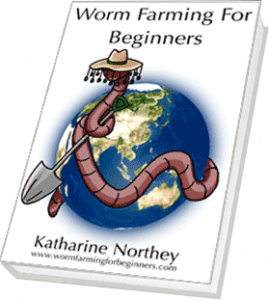Earthworm Castings.
Worm castings are recognised throughout the world as the richest natural, chemical free plant food known to man. (WonderwormUk.com, 2008)
Castings are odourless, non toxic, and are suitable to use on all plants, including delicate seedlings.
Earthworms don’t digest the organic matter that they “eat”. They are actually digesting the micro-organisms that are feeding on the organic waste matter. When they excrete the castings, there are now up to eight times as many beneficial micro-organisms as there were previously. If there were disease pathogens present on the organic matter digested by the worms, it is killed off by active micro-flora and intestinal secretions in the worms digestive system. In addition, the vermin-compost contains many additional minerals (compared to that of regular soil) that aid in plant growth, and are rich in humic and fulvic acids which balance pH of the soil.
Castings contain:
– A neutral pH of 7 no matter what the diet of the worm. – (“If you are looking for worms, you are in the right place”– http://members.tripod.com/-wormigrow/)
– Beneficial bacteria, plant growth hormones, vitamins, enzymes, amino acids, selenium, organic carbon.
– 5 times the available nitrogen, 7 times the available potash, and 11/2 times the available calcium than found in good top soil.
– Humic acid: which is a beneficial fungal activator.
– Fulvic acid: which is a beneficial bacteria activator.
– Auxins: which is an organic substance characterised by its ability to promote growth, particularly in roots. It is an active ingredient in rooting compounds.
– Not a single trace of E.coli, salmonella or other pathogens as they are destroyed due to the competition from the active micro flora and intestinal secretions. Most of our human pathogens are anaerobic and cannot survive in the aerobic environment created by worms.
– A “slow release” quality. After digestion, the undigested material-moves through the alimentary canal of the worm, a thin layer of oil is deposited on the castings. This layer erodes over a period of 2 months. So although the plant nutrients immediatelyavailable, they are slowly released to last longer.
– (“If you are looking for worms, you are in the right place” http://members.tripod.com/-wormigrow/)
–
By adding worm castings to your existing garden soil you will be actively helping plant growth by:
– Increasing the organic matter (humus) content. This will make your soil less likely to become compacted.
– Increasing the water retaining qualities. Castings can retain up to 9 times their weight in water.
To find out more on how worm castings improve your soil simply purchase:
“Worm Farming for Beginners”
Earthworms.
The Greek philosopher, Aristotle, once defined worms as: “The intestines of the soil”, which isn’t far off the mark. Basically an earthworm is a large digestive, muscular tube that tunnels it’s way through the soil, consuming at one end and depositing at the other.
There are approximately around 2 700 species (different kinds) of earthworms around the globe. One of the smallest earthworms is approximately 1 centimetre long and one of the largest can be 2 metres long.
The Giant Gippsland Earthworm is one of the worms largest earthworms. Unfortunately it is listed as a “vulnerable” species with International Union for the Conservation of Nature. It has an average length of up to 80cm and a width of 2cm. This may not sound too extraordinary, but when this worm is relaxed it can double its size! This means the Giant Gippsland Earthworm can reach the size of nearly 2 metres in length!
Earthworms are found right around the globe including: Australia, the Sahara Desert, Iceland and Mongolia are among only a few countries that have their own individual native species. Although several species live in differing horizons (layers) in the surface layers of soil, others can be found in decomposing logs, in the trees – the upper angle between the branch and the trunk, even sometimes up to 9 m above ground or along the damp soil surrounding rivers and ponds.
Earthworms are not suitable for composting though. Please refrain from digging them out of your garden and putting them into the worm farm!
Earthworms are similar to composting worms in regards to anatomy. For example:
Each worm consists of:
– A mouth, but no teeth.
– A throat, but no ears or eyes.
– A capillary system located under the worm’s skin, which acts as the worm’s lungs.
– Setae, which are small spines that are projected from the body wall by muscles and act as anchors. These also play a role in reproduction.
– A heavy-duty digestive system, in which enormous quantities of beneficial organisms are incubated and deposited into the soil with the castings.
– Up to 5 pairs of hearts, but no backbone.
– A body consisting of 200-400 muscular rings.
– Kidney type organs called nephridia.
– A brain. (Experiments have shown the removal of the brain causes only slight locomotive change. Both worms with a brain, and those without, perform at essentially the same rates. – Miriam F. Bennett)
For more information about worm anatomy and much, much more simply purchase “Worm Farming for Beginners”
Over 30% of all household rubbish is “green” waste (organic matter) that can be broken down by compost worms and re-used for a productive purpose in your garden. Instead in most cases, it’s hauled away to refuse stations, at your expense and thrown into landfill.
Generally the worms used for composting are called red worms:
Eisenia Andrei/fetida or Lumbricus rubellis. These worms are ideal as compost worms as they are ferocious eaters, surface dwellers and prolific breeders. If you hear the term “red wigglers” you know your purchasing the right type of worm. There are other types of worms that can be used:
– African night crawlers: Eudrilus eugenia, but as the name suggests, if they’re not happy they WILL crawl away in the night.
– Gardeners friend worms: Amynthus gracious/corticus.
– Tiger worms: Eisenia fetida.
– Blues: Perionix excavatus/spenceralia.
Garden earthworms are not suitable for composting so please leave them be in the garden so as they may tunnel
deeper down in thesoil and help the garden.
Compost worms are easily obtained these days through your local hardware stores and online sellers so

why not give it a go and start your own backyard worm farm today?
To make it even easier you can purchase your own “Worm farming for Beginners” manual to help along the way!
Have a look at the “About The Book” page to see the all the useful information you’ll need!


